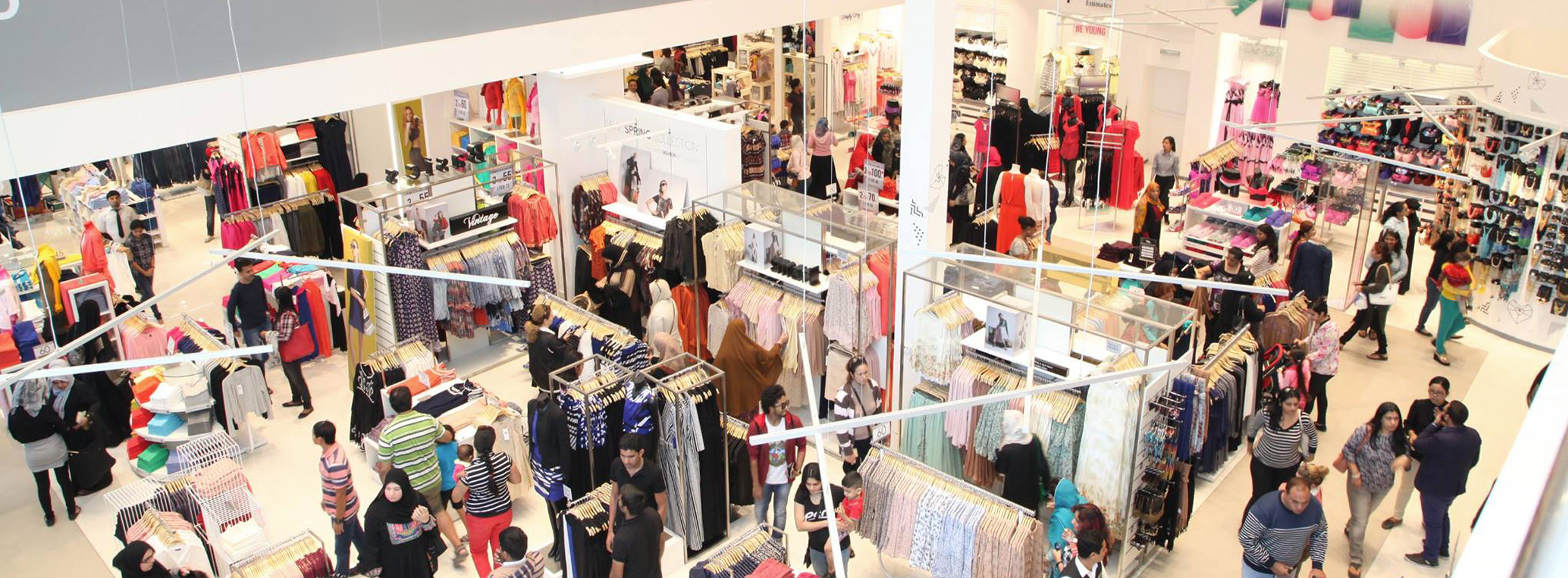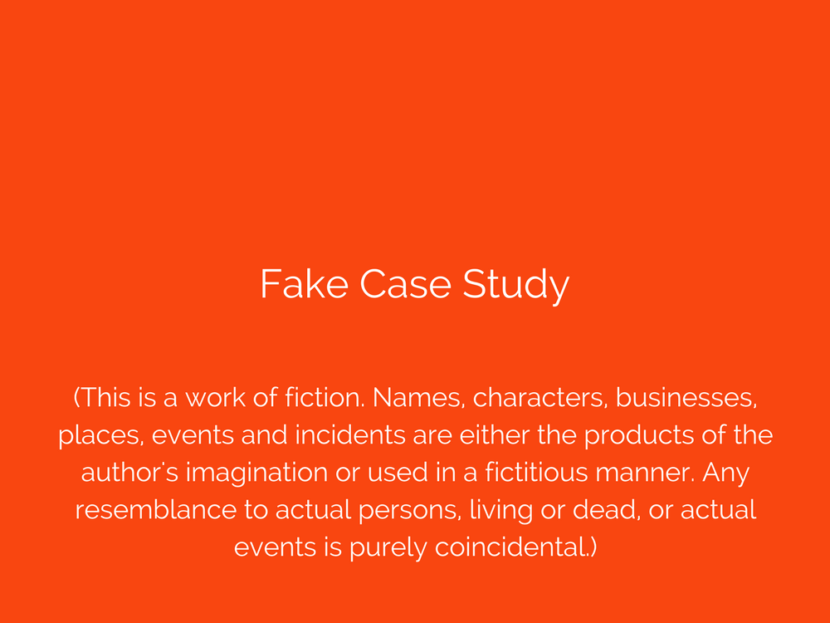Because so much of what we do is linked to a business’ long-term strategy we are not able to detail how we have created value without giving our Clients’ competitors, customers or other stakeholders a view from inside that tent.
So in the tune with the zeitgeist we present a ‘fake case’.
We could use a nom de guerre, but then we wouldn’t be able to list who we work with or that anonymity would be blown apart.
We think future clients knowing the names of the businesses we work with is more symbolic of the value of their trust, than a three paragraph ‘problem, action, outcome’ style case that because of it’s nature will skim the surface.
We could write the detail into a white paper of 2 or 3 thousand words, but no one would read it, except students or our competitors.
So we don’t.
So rather than either of these we decided to describe what we would do for a fictitious company, and the work we could do.
It’s also not going to be detailed for the same reasons above: we want you to read it, and we don’t want to give away our secret sauce.
This is a work of fiction. Names, characters, businesses, places, events and incidents are either the products of the author’s imagination or used in a fictitious manner. Any resemblance to actual persons, living or dead, or actual events is purely coincidental.

Ruby Louise – Fashion Goods Retailer
Challenge
Ruby Louise is a chain of fashion retail stores in Western Australia aimed at teenagers and young people.
A family owned business, they’ve been established for around thirty years and have 7 stores.
They currently spend approx $1M a year on advertising in the local newspaper, generally with double page spread advertisements in the magazine supplement.
The adverts are crammed with product, which very much reflects the customer in-store experience.
Their positioning is ‘pile it high, sell it cheap’. They have a great supply chain which allows significant savings across a range of branded goods.
The owner of the business has spent more than $1M per annum over the years, but has recently considered if the $1M is being spent effectively.
They asked Electric whether social media might be a better.
Setting The Scene
Any business can use social media to promote itself, create perceptions, drive traffic to its web site or store and create sales.
In terms of ‘reach and frequency’ Facebook is virtually beyond compare.
Facebook is the most cost effective way for businesses to achieve results in Brand Communications (Awareness / Engagement / Trust / Sales) and provides unequalled measurement & value.
Reach
Worldwide 1.5Bn Active Users (Over 1Bn daily) / Australia 15M 13+ / WA – 1.6M 13+ / Perth Metro – 1.2M 18+
Precision targeting: Location, Demographics, Interests & Behaviours:
E.g. You can target someone that is 53, Male, lives in ‘East Perth’, and a ‘University Graduate’, who earns ‘> $100,000’, is ‘In A Relationship’ and ‘No Kids at home’ and works in ‘Marketing’.
You can add interests in Marketing, Sports (Soccer, Golf, Rugby, Cricket), Wine, Italian cuisine, Cycling, Rowing, Apple products and Cars, Travels a lot, is an Expat British Citizen, has Pet Insurance and an iPhone. If you want to.
Relevant to Ruby Louise:
- There are 1,300,000 people over 13 years of age on Facebook / Instagram in a 20Km radius of Perth CBD
- 93,000 are 13 – 18 years old. (73k on Facebook / 44k in Instagram – They overlap)
- For $10 per day you can reach 1,100 – 2,900 a day on Facebook, and 1,400 – 3,600 on Instagram
- For $100 per day – the number increase to ‘8,200 – 22,000’ & ‘6,300 – 17,000’ respectively. ($36,500 p.a.)
- At the low end 14,500 (8,200+6,300) are GUARANTEED to see the Advert for $100.
That’s CPM of $6.90 per 1000. At 39,000 (22,000+17,000), that’s a potential CPM of $2.56.
Compare that to the CPM of advertising in a local newspaper. How many of their readers are 13 – 18?
You can further filter those ‘children’ by Gender, Language, or ‘interests’. E.g. Music, Make-up, Fashion
Say you wanted to support one store – all interests
e.g. 5Km radius around Clarkson = 5,000 x 13 – 18 year olds
e.g. 20Km radius around Bussleton = 49,000 x 13 – 65+
You can combine Place and demographics and interests
E.g. 13 – 25, 25Km radius of CBD, that like Fashion – 250,000
Frequency (of use)
- 72% users at least once a month. 65% daily
- Average Facebook User spend 40+ minutes per day
- 1 in 5 pages viewed on the Internet are Facebook pages
- Highest traffic occurs mid-week between 1 to 3 pm
- A post at 7pm will result in more clicks on average than posting at 8pm
- On Thursdays and Fridays, engagement is 18% higher
Organic Reach
5 years ago if you created & published any content on Facebook & Instagram, there was a great chance that people that like your page (fans) would see it in their timeline feed, like any advert online we call it an impression. Unpaid impressions are called organic reach (OR).
By 2014 OR dropped to an ‘average’ of 6%. In December 2015 OR was 2.5% if you had 10,000 Fans, but only 1% if you had 1000 fans.
E.g. Cristiano Ronaldo has 109M fans. A video he posted was seen by 3M OR c3%.
E.g. David Jones have 480,000 fans, so at best only 15,000 of them will see a post. More likely is a lot less than that.
If Ruby Louise have 3000 fans then only 30 – 90 will probably see the post – unless it is ‘engaged’ with (Liked, Commented on or Shared).
And that requires a quality of content that encourages engagement (competition, humour, utility etc.)
Paid Reach
Advertising on social channels reaches more people, more accurately, at less cost than traditional media.
Facebook as an Advertising Channel – for example – allows you to set objectives such as
- Boost Post
- Like Page
- Generate Local Awareness
- Push clicks through to a landing page on your website
- Invite people to an event
- Get people to claim special offers
- See a video
Facebook and Instagram are not the only social media channels to be used. Snapchat has 100,000,000 users 90% under 18. Pinterest is massive with women. ‘Musically’ with music fans etc.
Social Media Marketing In A Multi-Channel Marketing Strategy
Young people are not consuming traditional media in the same way as previously, they are consuming content on smartphones in social apps. Brands are building awareness & rapport with influencers / buyers through more multi-channel tactics: e.g. traditional media, in Email / SMS, with Sponsorships and Events, Apps, Branded Content on the Internet and in-store loyalty programmes.
e.g. A TV ad for brand awareness, positioning and halo offers; email for ‘customer relationship marketing’, the sponsorship for ‘corporate social responsibility’; and the content to build a future audience and apps for customer loyalty. It has to be that sophisticated to be sustainable.
Depending on the size of the budget tactics should be mixed on traditional offline media to influencers (Mums / Dads) to (seasonally) drive brand awareness, positioning and halo offers; on sponsorship at grass roots (college fashion shows?) to drive gratitude / legacy; and producing and publishing content on social channels to capture the future buyers, a better web presence and CRM.
Proposed Solution
Appoint an advertising agency that can deliver multi-channel marketing communications in an integrated way.
One that has years of experience and expertise in offline and offline, through the line and below the line.
The strategy being to generate brand attention, driving footfall, site traffic and loyalty.
Scenario 1: if the objective is maintaining market share (in a crowded and competitive retail market) we’d recommend a standard retail industry marketing budget of 5% of sales. Assuming turnover is around $15,000,000 p.a. that would mean a budget of around $750,000.
Scenario 2: Grow market share, would require significant scaling up 10%.
Brand Communications Activity
Creative, Media and Production
Scenario 1
Advertising Offline $400,000
Advertising Online and Customer Loyalty $250,000
Corporate Social Responsibility (Sponsorship) $100,000
Total $750,000
Scenario 2
Advertising Offline $700,000
Advertising Online and Customer Loyalty $500,000
Corporate Social Responsibility (Sponsorship) $300,000
Total $1,500,000
Result
As this is a fictitious case, there are no results.
However, from the advice it would be possible to see that Ruby Louise might just decide to spend lot less in a local newspaper and test the effectiveness of an omni-channel strategy.

